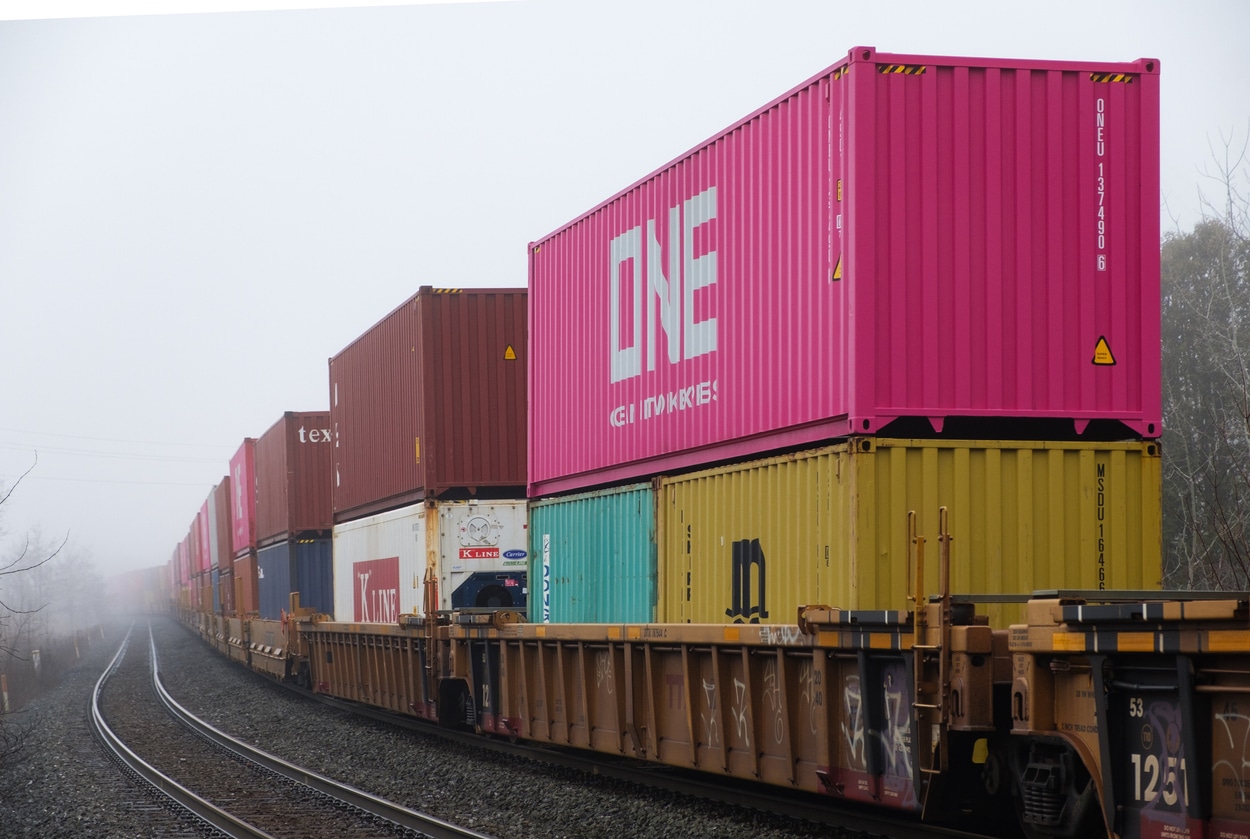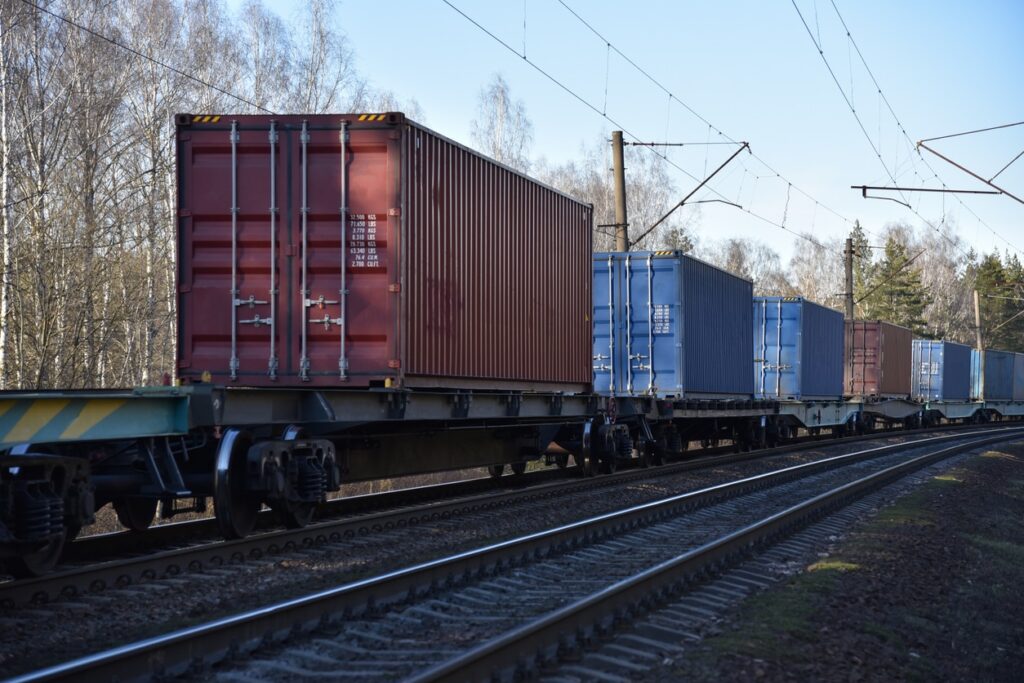In today's fast-paced world, the demand for real-time data in shipping and logistics has become…

Rail Freight: An Efficient and Eco-Friendly Transportation Solution
Rail’s Resurgence in Modern Logistics
Global demand for cost-effective, low-carbon freight options is steering shippers back toward the rail network. Analysts value the rail-logistics market at USD 416.8 billion in 2024 and forecast a rise to USD 697.5 billion by 2034 at a 5.4 % CAGR, underscoring sustained growth potential. In North America, intermodal volumes climbed 8.5 % in 2024, reversing the previous year’s slump and signaling renewed confidence in container rail.
Cost Competitiveness per Ton-Mile
Rail’s chief economic advantage is a markedly lower cost-per-ton-mile than highway trucking: recent analyses put the differential at ≈ $0.105 per ton-mile in rail’s favour. Real-world Canadian data show average rail rates of 4.16 U.S. cents per revenue ton-mile—far below the $2–$3 per truck-mile range common on North-American highways. A single unit train can replace about 280 truckloads, magnifying these savings on long corridors.
Fuel Efficiency and Operating Performance
Thanks to steel-wheel-on-steel-rail physics and continual locomotive upgrades, U.S. Class I railroads can now move one ton of freight nearly 500 miles on a single gallon of diesel. Even conservative federal filings note averages above 480 miles-per-gallon-per-ton. Compared with 2000, modern fleets saved 765 million gallons of fuel and 8.6 million t CO₂ in 2022 alone, reflecting sustained productivity gains.

Emissions Profile: Rail vs. Road
EPA SmartWay data peg rail at ≈ 22 g CO₂ per ton-mile, while long-haul trucks emit ≈ 65 g CO₂ per ton-mile, a two-thirds reduction when shippers shift modes. Nationally, rail handles 28 % of all U.S. freight ton-miles yet produces only 1.7 % of transportation-related greenhouse-gas emissions, highlighting its carbon advantage. European studies echo the finding: rail and inland waterways sit at the bottom of the g CO₂e per tonne-kilometre hierarchy among freight modes.
Policy Support and Public Investment
Governments are reinforcing rail’s role in decarbonisation. The U.S. Federal Railroad Administration (FRA) launched a Climate Challenge to reward operators that meet net-zero pathways and expand access to low-carbon rail corridors. In late 2024, Washington allocated $2.4 billion for 122 rail-infrastructure projects, prioritising bridge renewals, hydrogen-locomotive pilots and climate-resilient track work. California has gone further, mandating that all new locomotives be zero-emission by 2035, a first-in-the-world standard.
Technology: From Diesel to Batteries and Hybrids
Manufacturers and railroads are already field-testing alternatives to diesel-electric traction:
| Emerging Propulsion | Current Milestones | Reported Benefit |
| Hybrid diesel-battery | Union Pacific unveiled North America’s first prototype hybrid switcher in 2025 | Targeting ≈ 80 % fuel reduction |
| Battery-electric heavy-haul | Wabtec’s 7 MWh FLXdrive entered commercial trials in Australia (2024) | Zero tailpipe emissions on grades |
Industry press, however, notes unresolved hurdles—battery weight, range limits and charging infrastructure—that complicate large-scale deployment.
Intermodal Growth and Network Capacity
Intermodalism couples rail’s long-haul economics with trucks’ local flexibility. Consultancy forecasts see the greatest Class I revenue growth coming from shorter-haul, interchange-heavy lanes, where service refinements can pry market share from trucking. Weekly U.S. statistics show container-and-trailer units rising 7–8 % year-over-year in early 2025, even as certain bulk carloads soften.
Market-Side Headwinds
Rail’s cost advantage can narrow when infrastructure scarcity, crew shortages or equipment imbalances constrain service, and recent studies document post-2020 price volatility: the cost of a 1,000-mile rail move climbed from $98 per ton (2018) to $160 per ton (2023). Technology commentators also flag the capital intensity of fleet electrification and the risk that battery or hydrogen paths may diverge regionally, delaying universal standards.
Key Facts at a Glance
- Fuel Efficiency: ≈ 500 mi-ton-gal (rail) vs. ~135 mi-ton-gal (typical long-haul truck)
- Carbon Intensity: 22 g CO₂ / tkm (rail) vs. 65 g CO₂ / tkm (truck)
- Average Cost Gap: ≈ 10 ¢ saved per ton-mile shifting from truck to rail in U.S. corridors
- Capacity: One train ≈ 300 trucks when measured in equivalent freight volume
- Market Outlook: Global rail-logistics value expected to grow 5.4 % CAGR through 2034
Summary of Findings
Public-sector funding, private innovation and shippers’ decarbonisation targets are collectively expanding the role of rail freight. While locomotive electrification, network resilience and service reliability remain active challenges, available data confirm rail’s superior fuel economy, lower emissions, and competitive cost structure relative to road transport across medium- and long-haul lanes. The trajectory of investment and policy indicates continued momentum toward an even more efficient, eco-friendly rail-freight landscape.



